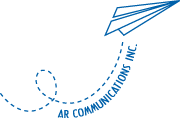Quick content marketing fixes
If your content marketing efforts are falling short of your goals, don’t head back to the drawing board just yet. Chances are a simple tweak may, in fact, be all you need.
If your content marketing efforts are falling short of your goals, don’t head back to the drawing board just yet. Chances are a simple tweak may, in fact, be all you need.
The Canadian Bar Association has issued new guidelines on Web & Social Media Marketing. These were created in response to an influx of questions from lawyers looking to ensure their marketing initiatives were onside with existing regulations.
Read Robert Todd’s article in the Law Times, where AR Communications’ Michael Rabinovici is quoted here, or go to http://www.lawtimesnews.com/200910195631/Headline-News/CBA-offers-tips-on-legal-Tweeting.
As entertaining as some marketing communications are, what it all comes down to is whether or not they compel the reader, viewer, or listener to take action.
People take action as a way of meeting their most basic emotional needs. People decide with their feelings and then rationalize their decisions with the facts. If you can match your offer with their needs, you’ll get better results. For example:
People want to belong – Show them that other people, just like them, have taken the same action that you’re asking them to take. Use testimonials, case studies, or stories.
People want to escape pain – Put them in touch with the pain that will continue and worsen if they fail to take action.
People want to experience pleasure – Paint a colourful picture of the benefits and positive feelings waiting for them once they take action.
People want to feel financially secure – Offer a financial incentive to act now, such as a time-limited discount or bonus offer.
Depending on your product or service, you may also want to align your message with people’s needs for fame and fortune, increased wealth, or health and happiness. The inducement will differ with each offer you present, but the result should always be the same: Measurable response with every communication.
The content creators
Tel: 416-999-9248
contact@ar-com.com
